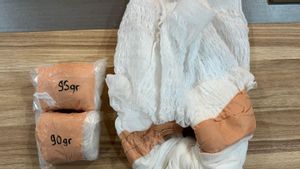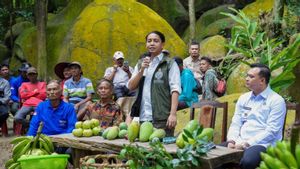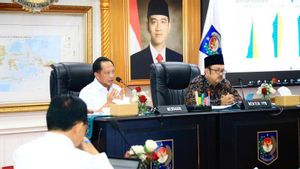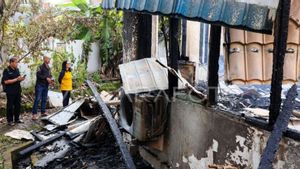The Geological Agency of the Ministry of Energy and Mineral Resources (ESDM) recorded a change in the color of the Crater I lake on Mount Kelimutu in Ende Regency, East Nusa Tenggara (NTT).
"The change from dark brown to brown," said Head of the Kelimutu Volcano Observation Post, Irwan Ka Uman when quoted by ANTARA, Monday, June 10.
The change in the color of the Crater I lake has occurred since June 8, 2024. Irwan said there were several factors that allowed the change to occur.
He said the weather factor, namely the high intensity of rainfall, could affect the change in the color of the crater lake. Furthermore, the volcanic activity factor from Mount Kelimutu.
Next, he continued, there is a possibility of changing the composition of lake water due to the solubility of rocks. "In addition, the possibility of convection increasing gas to the surface," he said.
Mount Kelimutu is a strato-type volcano that has three craters. The level of volcanic activity has been raised from Level I (Normal) to Level II (Alert) since May 24, 2024, due to significant changes in the color of the Kawater I lake and the dynamics and distribution of sulfur on the surface of the increasingly intensive Kawah II lake water.
Irwan conveyed that the Geological Agency's recommendation for the community or visitors was still the same, namely not being around the crater within a radius of 250 meters from the crater edge. This must be a concern for the public or visitors to Kelimutu National Park, because of the potential danger from the mountain, namely the eruption of phreatics and magmatics.
"So, our recommendations are still the same so that there is no activity within a radius of 250 meters," he said.
With the increase in mountain status and the dynamics of seismic activity, the Kelimutu National Park Office opened visiting hours only from 06.00-12.00 WITA. Ticket counters are also open only until 10:00 WITA.
SEE ALSO:
Head of the Kelimutu National Park Office, Budi Mulyanto, said that people or visitors are not allowed to approach the Crater I and II lakes. Areas that can be visited are only ladder views and peaks of Kelimutu.
"Also they are required to wear masks and bring drinking water," he said.
It was observed from the surveillance camera of the Mount Kelimutu Volcano Observation Post, brown crater I lake water, and the boast of water was observed in the northeast of the crater lake surface.
Furthermore, in Crater II, the crater lake water is light blue, yellow and light yellow sulfur deposits are observed scattered above the surface of the crater lake water in the middle and in the south. Meanwhile, the water of the Crater III lake was observed to be dark green.
The English, Chinese, Japanese, Arabic, and French versions are automatically generated by the AI. So there may still be inaccuracies in translating, please always see Indonesian as our main language. (system supported by DigitalSiber.id)
















